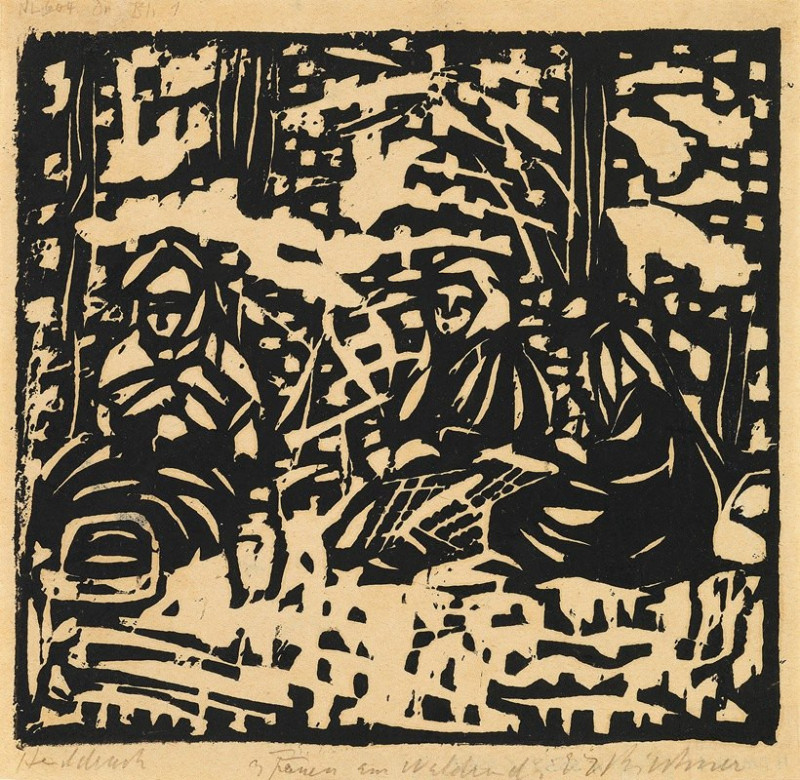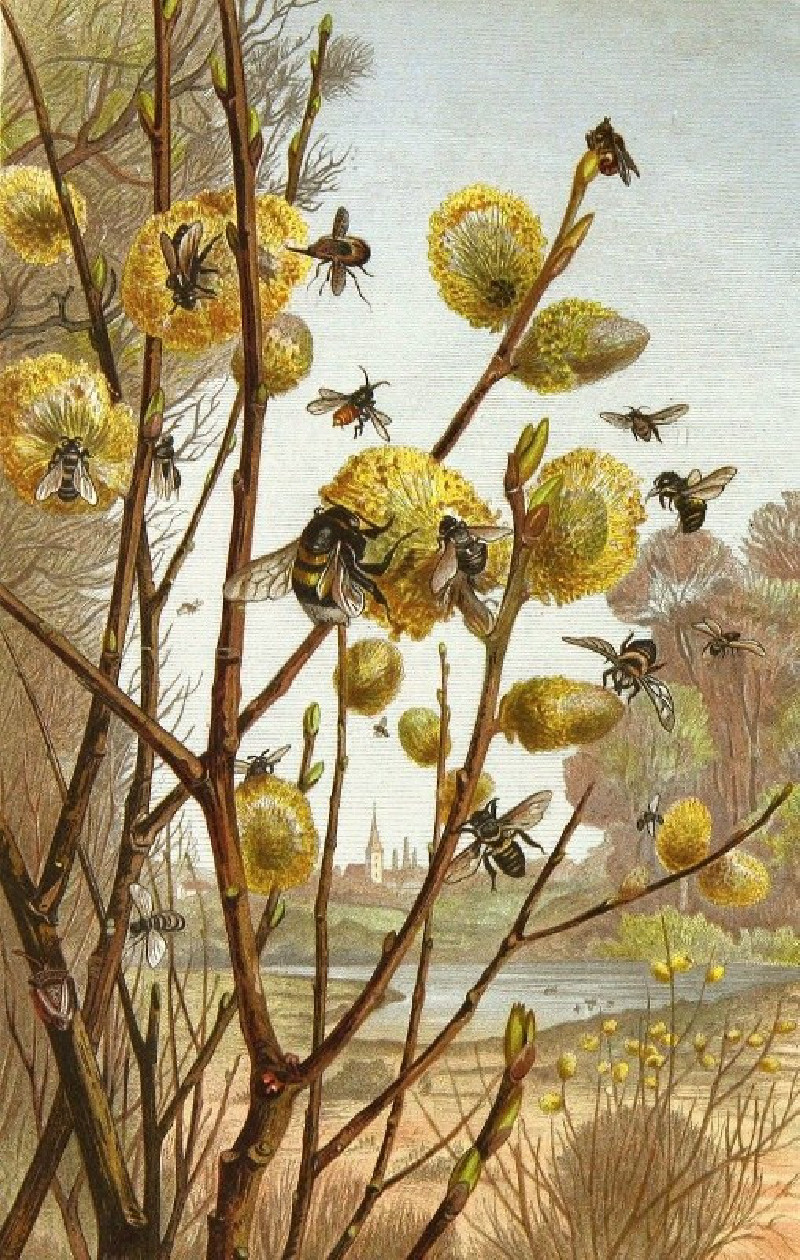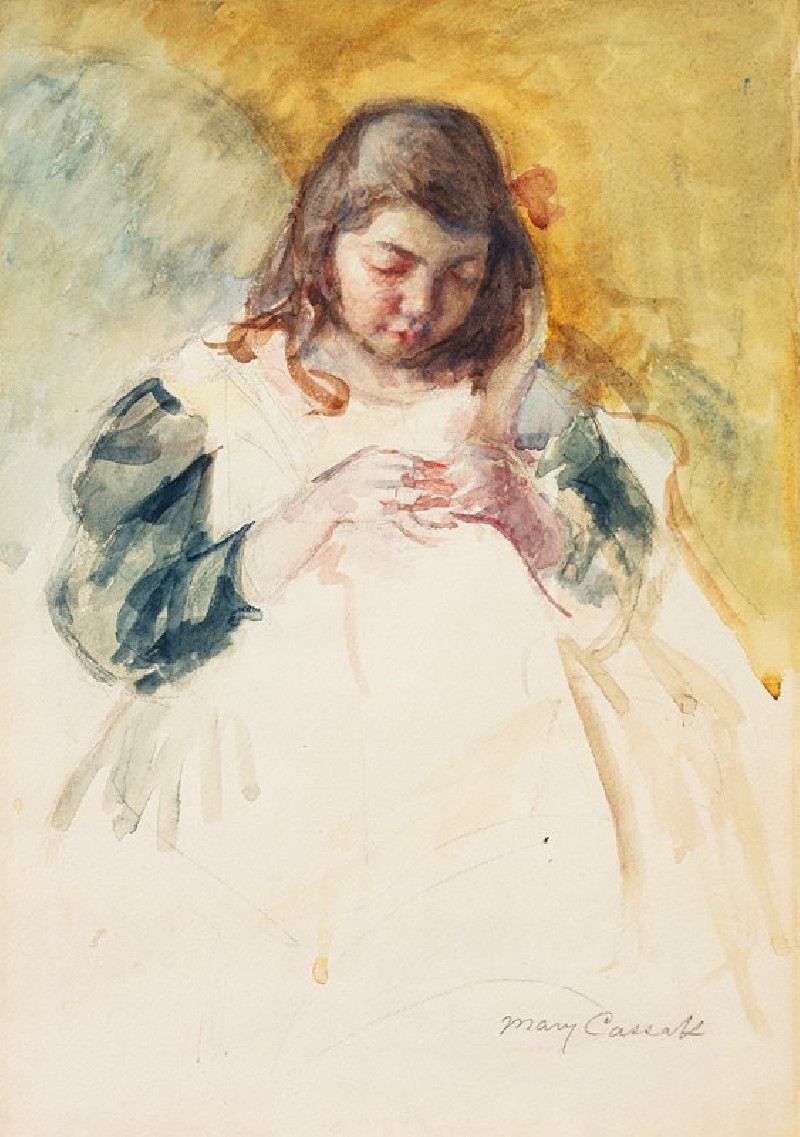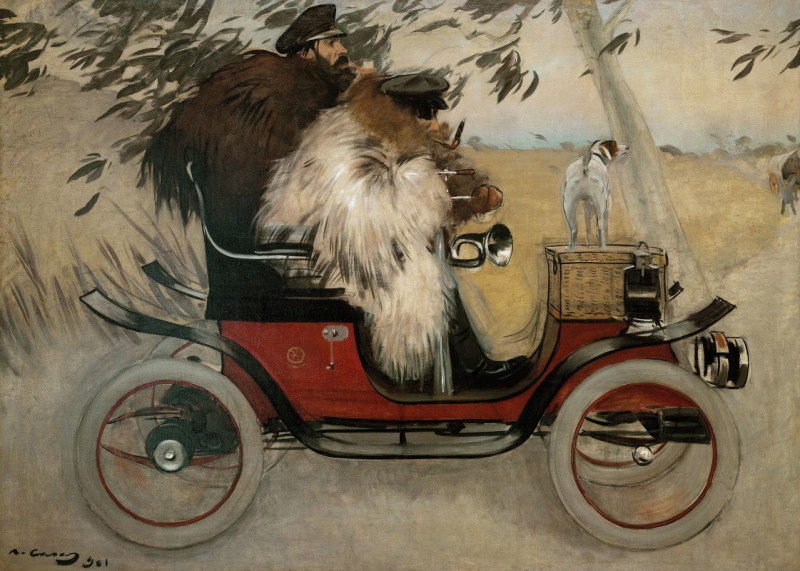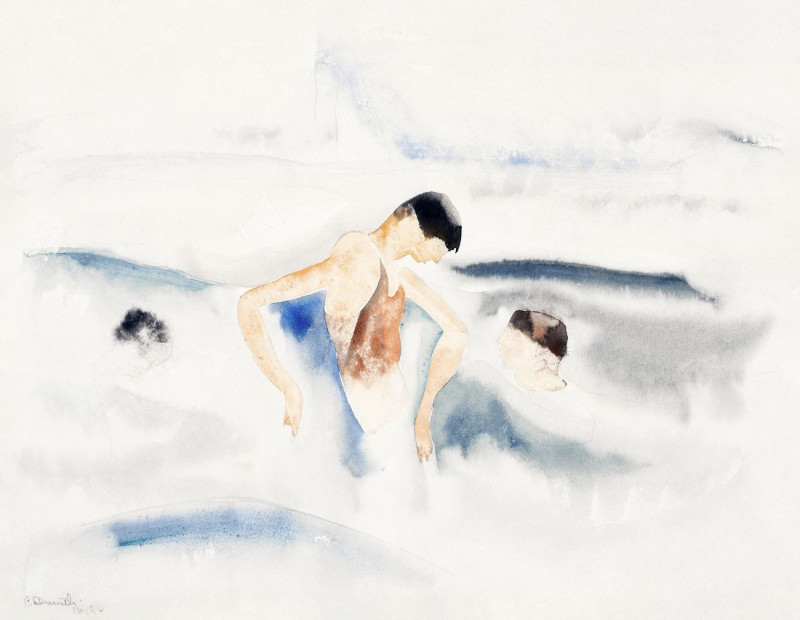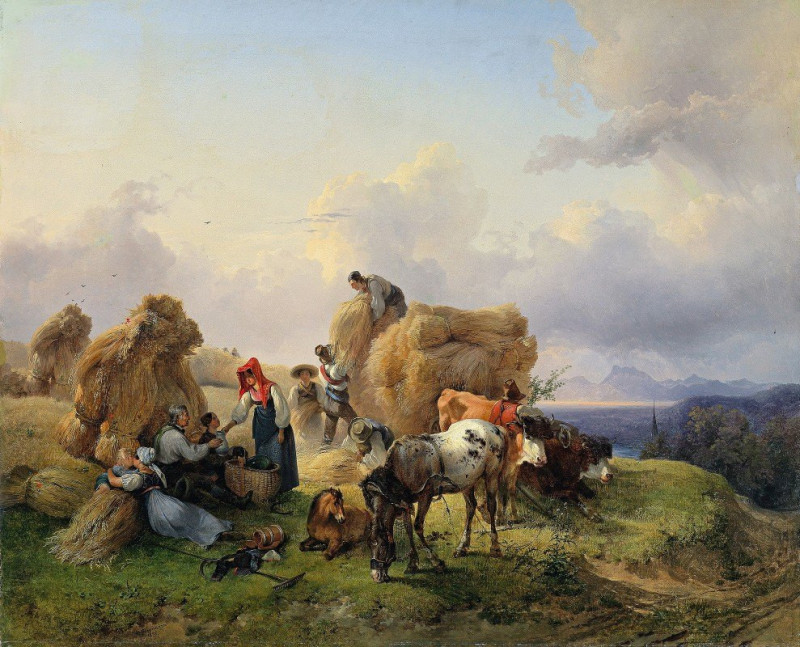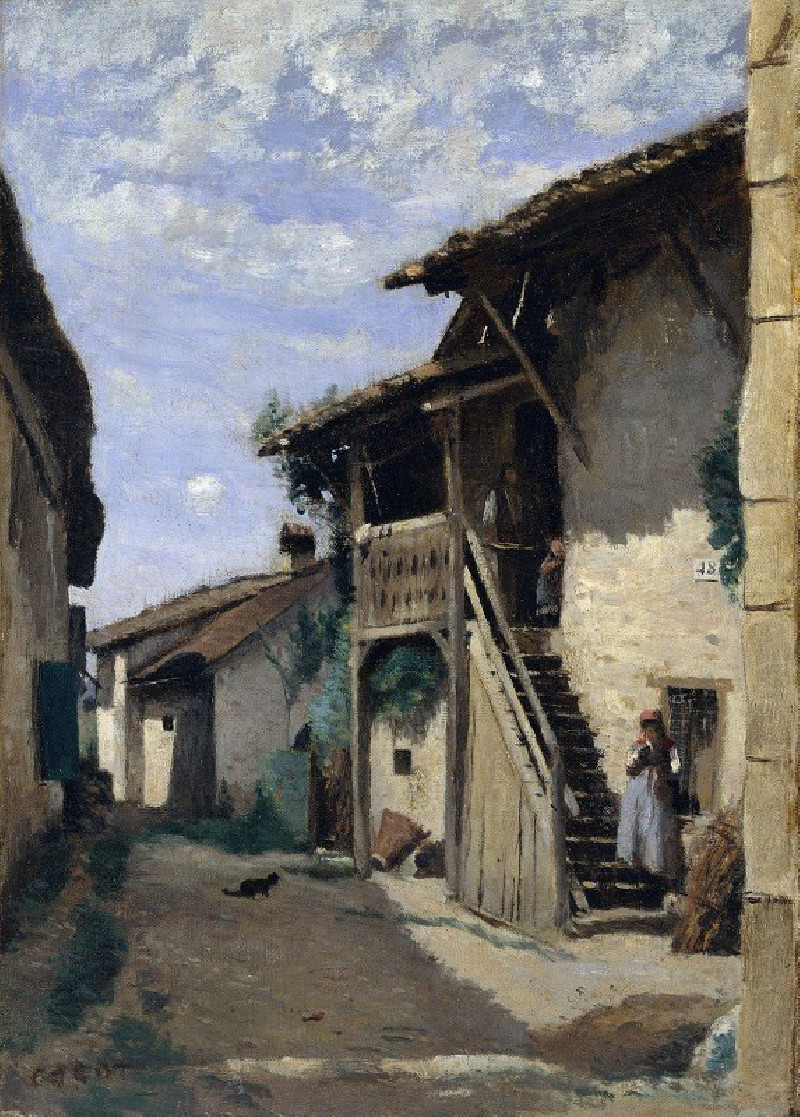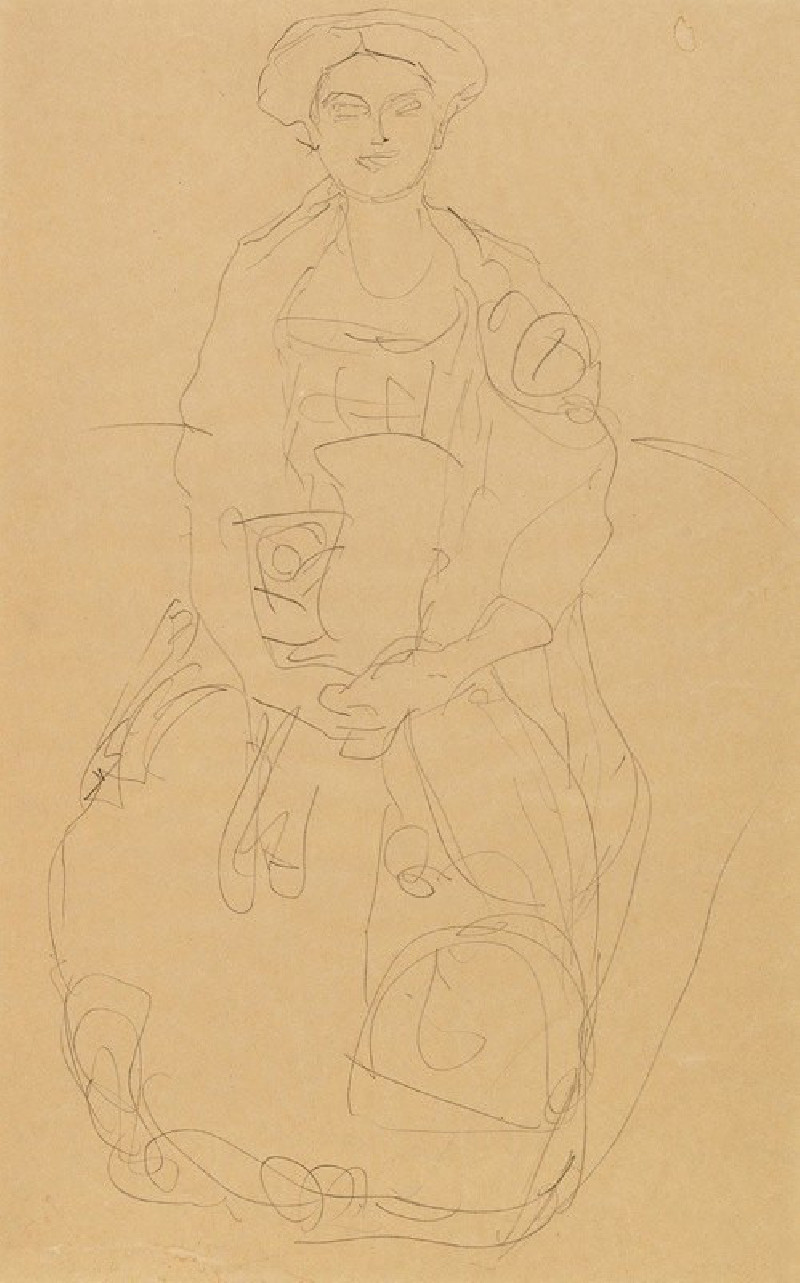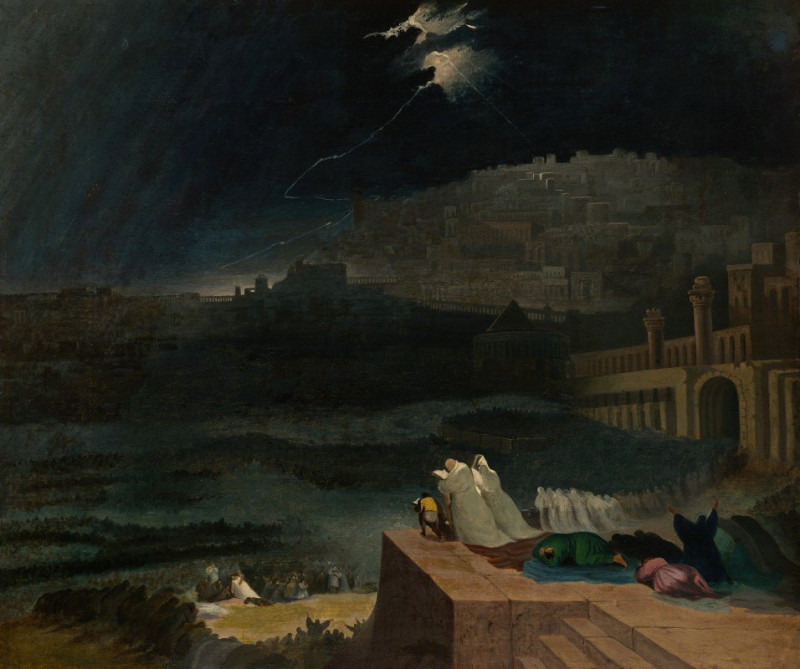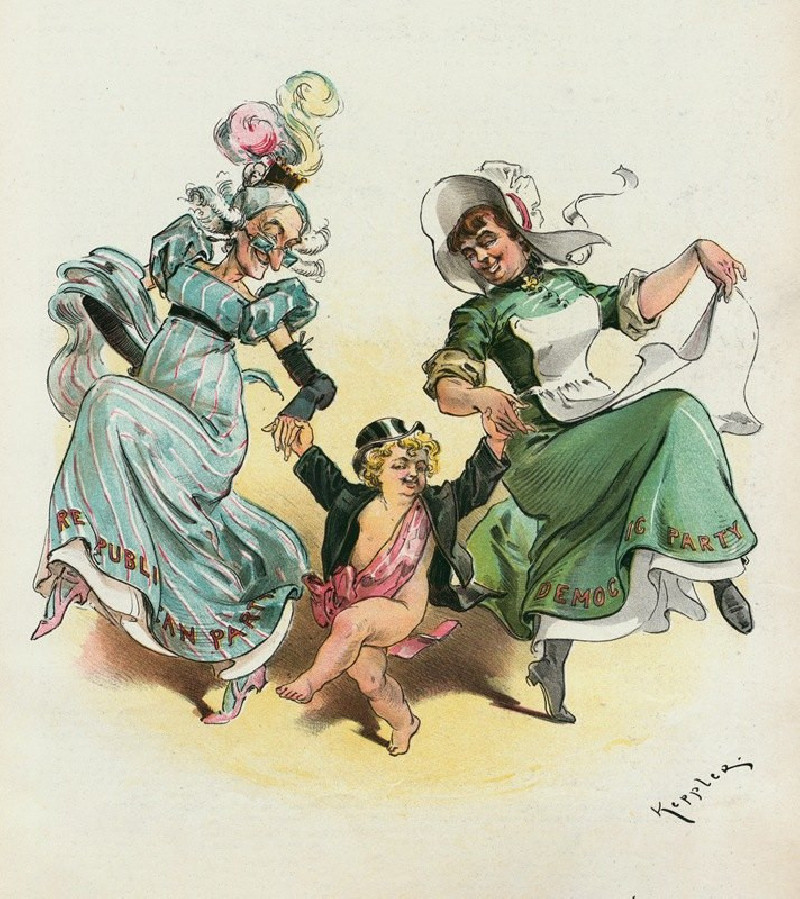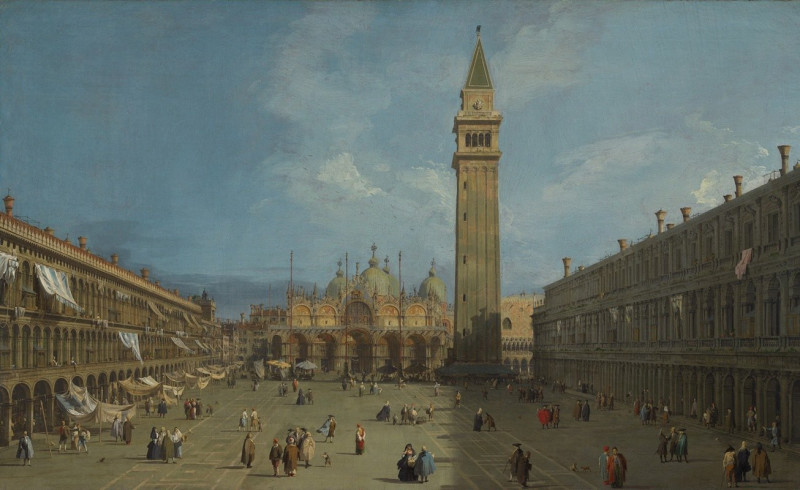Drei Frauen am Waldesrand (1906)
Technique: Giclée quality print
Recommended by our customers
More about this artwork
Painted by the influential German artist Ernst Ludwig Kirchner in 1906, "Drei Frauen am Waldesrand" (Three Women on the Edge of the Forest) is a remarkable work that showcases Kirchner's unique approach to woodcut art during the German Expressionist movement. This piece beautifully encapsulates the essence of Expressionism through its bold, simplified forms and stark contrasts.The painting features three women, depicted in a stylized manner, nestled amidst the dense foliage at the edge of a forest. The composition is a striking balance of black and white, where the cutout technique creates an intriguing interplay of light and shadow through abstract shapes and patterns. The figures themselves are simplified yet expressive, characterized by sharp angles and disjointed forms that lend them a dynamic and somewhat ethereal quality.Set against a heavily patterned backdrop that almost seems to vibrate with the texture of the woods, the image conveys an intense emotive experience—one that is less about the literal representation of the scene and more about the emotional landscape that Kirchner sought to communicate. "Drei Frauen am Waldesrand" is a fine example of Kirchner's expertise in woodcut techniques and his capacity to translate complex feelings into a visually startling form of art.This painting is just one example of Kirchner’s pioneering role in the Expressionist movement, which aimed to transcend the traditional appearances of objects in favor of subjective expression.
Delivery
Returns
Ernst Ludwig Kirchner (1880–1938) was one of the most important German Expressionist painters. He was a co-founder of Die Brücke, a group of German expressionist artists formed in Dresden in 1905. Die Brücke and Kirchner took inspiration from Vincent Van Gogh and Edvard Munch, as well as African and Oceanic art. They used woodblock printing as a medium to showcase their signature style: flat, unrealistic images with vivid colors. The recurring themes in Kirchner's artworks included exotic cultures, faraway landscapes, self-portraits, dancers and Berlin street life. His paintings and prints effectively portrayed non-European cultures despite the fact that he never traveled outside of Europe.

